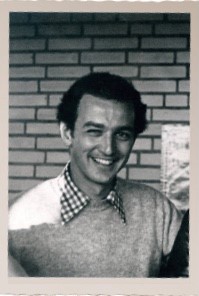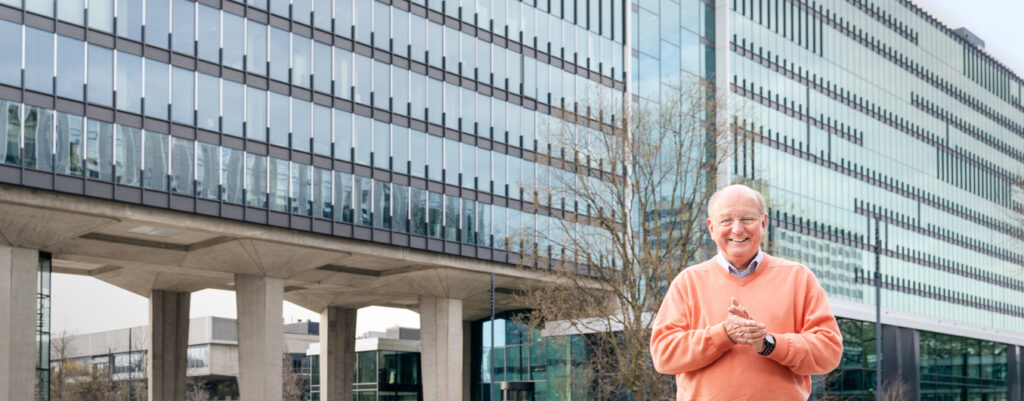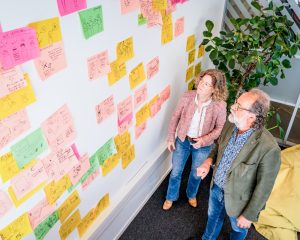The gap between fundamental research and industry
First section of a two-part interview. Read here the second section.
“Eindhoven Engine is based on an essential need in the research and technology landscape. I worked thirteen years at TNO, of which I was chairman of the board for six. As such, I came to the conclusion that TNO is a crucial research organization in the Netherlands. In 1932, TNO was founded to take theoretical discoveries from universities and turn them into applied technical solutions for society and industry.
“There is a missing link in the technology development scale from brilliant research idea to market introduction. From proof of principle through to proof of concept and from a science prototype to a developed prototype ready for production for the market.
“Institutes of applied research, like TNO, can bridge that gap and complete the full chain of technology maturation. The relationship with the universities and the transfer of knowledge is essential in this case. If that process of knowledge transfer (in which TNO can play a key role) had been better developed, Eindhoven Engine would have never seen the light of day.”
“Eindhoven Engine is based on an essential need in the research and technology landscape.”
It’s early spring. At the time of this interview, the wind is picking up, gray clouds race overhead and it’s starting to drizzle. This didn’t stop Jan Mengelers – a member of the Eindhoven Engine board until 1 March 2021 – from showing up. A few minutes earlier, he passed the rectangular pond and strode across the grand square surrounded by the towering glass buildings of Eindhoven University of Technology. Very familiar surroundings for him because he was president of this university until mid-2019.
We settled ourselves at the bright yellow picnic tables under the canopy of the main building. “I think this job was actually the job in my career I did best,” he says with a sigh and a slight grin while pointing at the entrance behind me. “This position was the crown of my career. I was finally able to combine all the experiences of previous jobs and put them to good use with more wisdom in this job.”
Obtaining finesse
“When I was thirtyish, fortyish, I was quite different, very eager to achieve ambitious goals with a lot of drive and hard work. I recognize this now in younger generations of the same age. Just like them, I was all ‘sturm und drang’. I missed finesse, diplomacy and thoughtfulness. The older I got, the more it became clear to me that my style had to change. You learn to be more patient, with more understanding of the context of things, and to respect different opinions. Achieving a compromise is not a failure but rather showing respect to the other stakeholders in the process.”
Three worlds co-existing
“We digress; your question was why Eindhoven Engine exists. In the past, the overlap in research between universities, institutes like TNO and industry was greater. Philips NatLab, for instance, did equally good fundamental research as most universities. The transfer of knowledge into marketable solutions was organized in the company itself. But as industry reduced their funds for fundamental research, departments like NatLab reduced substantially and became extremely focused. On paper, institutes like TNO could fill this void. Of course, the researchers of the university and TNO are acquainted with each other, but there is too little symbiotic merging in cooperation.

“In reaction to the 1996 policy of minister Maria van der Hoeven, universities had to also deliver valorization of their knowledge in addition to excellent education and outstanding research. Universities therefore started organizing Technology Transfer Offices. In order to prove the worth of their research, they tried to apply it in practical solutions. This way, the activities of the universities showed an overlap with institutes like TNO. Across universities, a new type of business development was created to bring technologies from curiosity-driven research to application-driven solutions. They started creating and maintaining patents and establishing start-ups. Nevertheless, the universities found it hard to create a smooth transition for technologies. The universities realized that it is not in their nature to build applications. They excel at creating fundamental research and sharing their knowledge in publications, but not in tinkering with a prototype and reproducing it over 35 times until perfection for market introduction. “Three worlds started to exist next to each other: universities, industry and institutes like TNO.”
In need of a NatLab 2.0
“As industry reduced their budgets for fundamental research, they recognized that the brainiacs at the universities produce the most ingenious solutions. The trouble was that these ideas stayed at the universities. There was too little effort to develop them further in order to bring them to the market. I think it would have been best to rearrange the whole research and technology landscape of the Netherlands just to optimize the route of new technologies to the market. It is possible, but you will probably need a good crisis. The solution-driven cooperation between scientists and manufacturers in the recent worldwide COVID-19 crisis is proof of that. “As long as there are higher stakes, no real crises and money to earn with existing proven processes, nothing will change drastically.
“The Engine closes the gap between fundamental research and the market by creating teams of scientists out of the three worlds.”
“We therefore came to the conclusion that we need a NatLab 2.0 embedded in the industrial ecosystem of Brainport. An organization that picks up promising and inspiring fundamental research at the universities and turns it to meaningful solutions that society can benefit from in everyday life. Together with Maarten Steinbuch, we started making plans and we came up with Eindhoven Engine.
“The Engine closes the gap between fundamental research and the market by creating teams of scientists out of the three worlds (universities, industry and institutes) and letting them work on innovations with inspiring ‘moonshot’ goals, preferably co-located in one building. I think that we have successfully created a concept which mends the flow in the progress of technology maturity levels so that it can be a fluid continuum again.”

